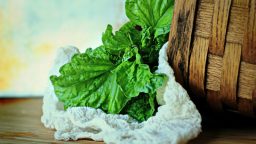Cheesecloth is a very useful material. While it has its obvious uses in the kitchen, including cheese making and filtering various products, this fabric can also be used in your garden. One of the reasons why you can use it outdoors is the fact that it’s such a natural material that it can be composted. On top of this, you can use it more than once, turning your small investment into something that will stick around for a while. Here are some additional uses for cheesecloth – and all of them take place outdoors in your garden.
Protect Your Plans
Your young plants need protection from the elements. This means that they need to be covered, especially when they’re still in the seedling stage. If you don’t have the space to start your seeds indoors and need to place them outside (as long as your climate allows for it, of course), then you can create a small covered “house” for your plants. Leave them in the large planter, place some stakes in the four corners, and then drape your cheesecloth over it. The cheesecloth will protect those seedlings, while still allowing plenty of air, light, and water in.
Scare Away Pests
Did you know that you can keep pests out of your garden with cheesecloth? This is another great use for this material. All that you need is a pair of scissors, some small stakes, and a liquid that will keep squirrels, rabbits, raccoons, and more at bay. Ammonia is a great example. You want to use something that won’t harm your plants. Just slice the cheesecloth into strips, dip them in the liquid, and then tie them to the stakes. Plant the stakes near the crops that you want to protect. Check out: 5 Tricks for Keeping Animals Out of Your Garden
Create Plant Food from Compost
Cheesecloth can even help you create plant food from compost. How? All that you need is to grab a scoopful of compost from your bin. Place it in a square of cheesecloth and fold up the corners. Then, tie them closed with a piece of string. It’s like you’re making a tea bag – and that’s exactly what this is. Place your cheesecloth bag, with the compost in it, of course, into a watering can full of water. Let it steep for around half an hour, and then remove the bag. Pour the water, which is now mixed with nutrient-rich plant food, onto your plants. Voila! All-natural fertilizer. Check out: Benefits of Compost Tea
Tie Your Plants to Stakes
If you have plants that waver in the wind, either because they’re too tall to support themselves or too young to stay up properly, you can use strips of cheesecloth to tie them into place. Some plants, especially those with thin, young stems, can droop over, causing damage. Thankfully, tying these plants to a support system, like a series of stakes or even a trellis, can give them the support that they need in order to remain healthy. Just make sure to not tie them to the stakes too tightly, as that can damage them as well.
Start Your Seeds
You can make a sprouter for beans or sprouts out of a simple canning jar and a piece of cheesecloth. Soak your bean seeds or sprouts overnight and then place them into the bottom of a canning jar. Take your canning jar and remove the metal lid, leaving behind only the band. Cut a small square of cheesecloth and fit it over the top of the jar, securing it into place with the band. Leave the jar in a sunny area, and keep removing and then adding more water every day, until you see the sprouts emerge.


